Introduction
- Soccer has become a major actor in the business sector around the globe today. In fact it has become a major industry worth billions of dollars a year.
- The general purpose is to inform the public about trends in the soccer industry.
- The specific purpose of this informative speech is to inform the audience about the recent trends in the major markets of today’s soccer industry.

The Soccer Industry
The three major markets in the soccer industry are the European market, the Latin American market and the newly emerging North American market.
As now speaking, the European market is the biggest of the soccer industry around the world.
Last year, in 2008, the total amount of the transactions in this market was around 1.2 billion Euros, approximately 2.3 billion US$ (“Richest Soccer Teams”, 1).
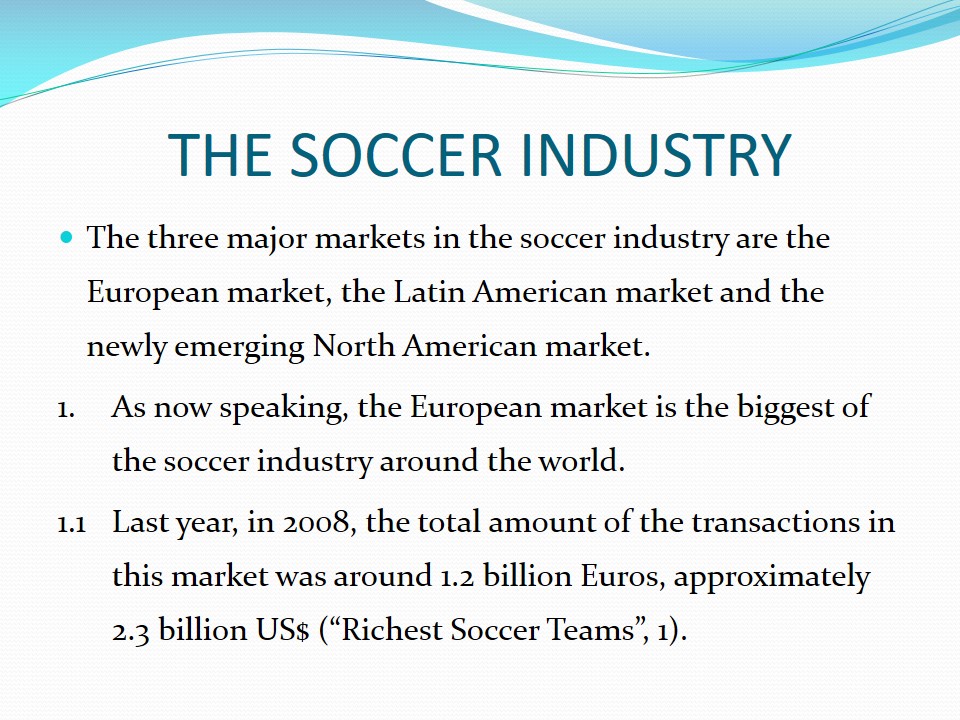
European Market
This amount included both player transfer within the market and from other markets (mainly Latin America) along with TV rights and individual or team sponsorship deals with multi-giant corporations.
For example, Manchester United, the actual English Premier League Champion, has a $38 million sponsorship deal with Nike.
Man United’s former star, David Beckham, when at rival Real Madrid, earned millions of dollars in sponsorship from Gillette and Pepsi (“Richest Soccer Teams”, 1).
Even individual soccer clubs are worth hundred of millions if not billions of US$. Most of them are also part of the stock exchange offering investors high rates of return of investment.
For example Manchester United is reckon to be worth 1.3 billion US$, more than the most valuable franchise in the National Football League, the Washington Redskins, and baseball’s most globally recognized team, the New York Yankees (“Richest Soccer Teams, 1).
The European leagues along with the pan-European “Champions League” attract a global audience, unmatched by any other professional team sports (“European Championships”, 1).
This means Europe’s top teams–and stars–attract millions of dollars in sponsorship from many multinational corporations.
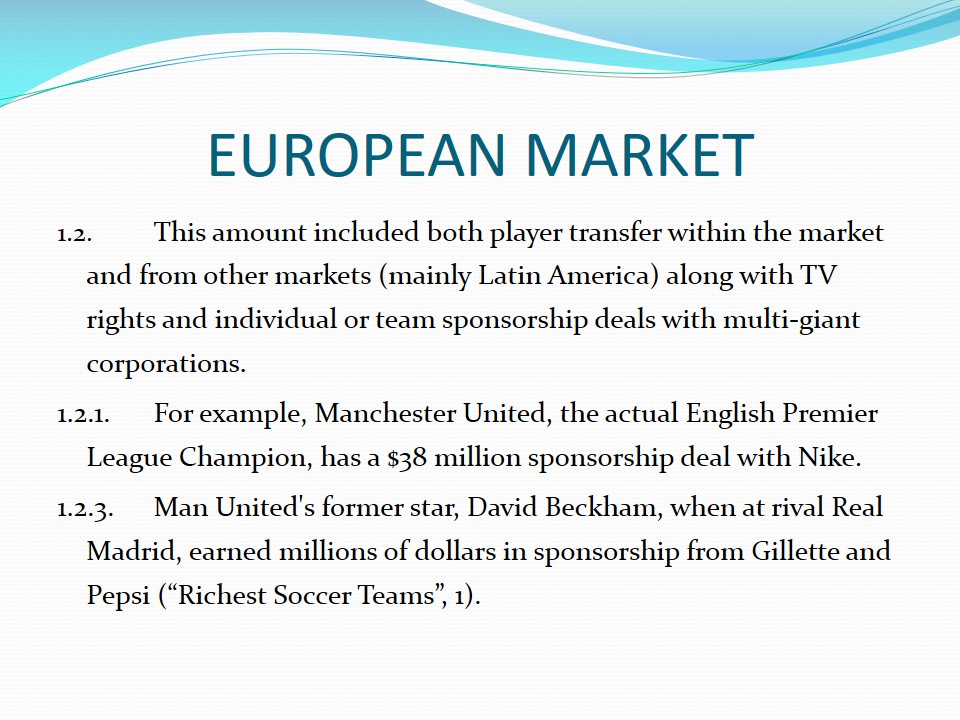
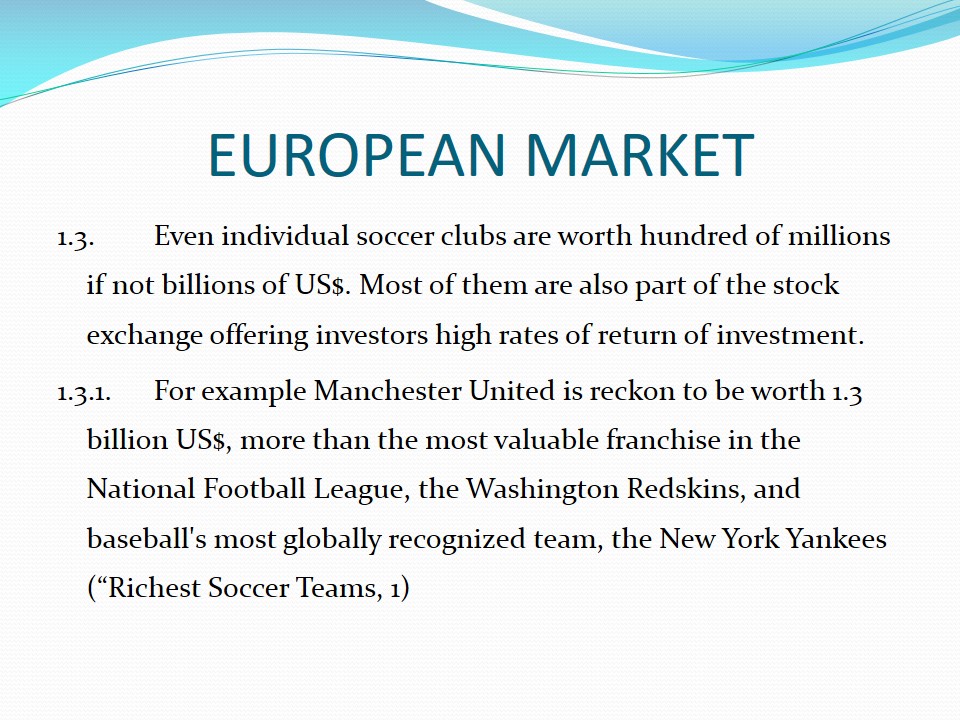
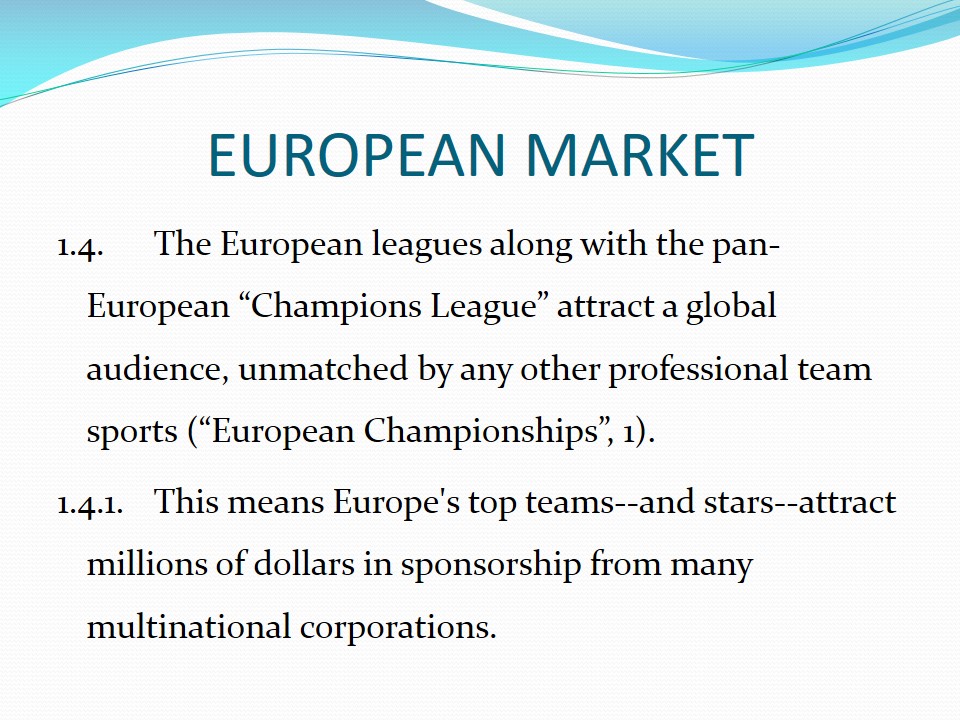
Latin American Market
The second biggest market is Latin America.
Last year, in 2008, the total in transactions reached up to 980 million US$ (“Richest Soccer Teams, 2).
Still it is less than half of the value of the European market.
Brazil and Argentina are the two major players in this market. Last year the transactions of transfer of players between these countries and other markets (mainly European) reached more than 400 million US$.
Even though these two countries, and Latin America in general, serve as the main source of talent search for the European teams and not only.
From a survey it resulted that players from Latin America compose the vast majority of non-European players in European leagues (“European Championships”, 2).
Thus, it serves more as a transit market for players who wish to succeed in this industry.
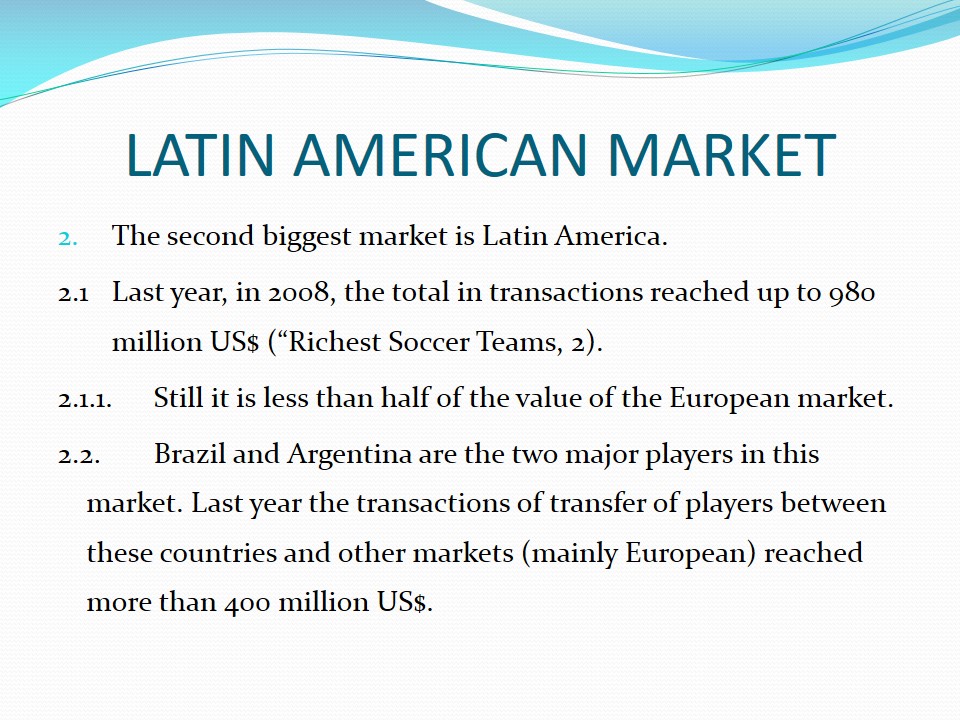

North American Market
The third market to be discussed is the North American market, which is the fastest growing market of the industry.
During the last decade there have been significant investments in the soccer sector mainly in the United States.
Except from infrastructure investments there have been also significant professionalism-increasing investments.
Deals like the deal that L.A. Galaxy made with David Beckham a few years.
Even though worth only 250 million US$ for the moment, the soccer industry in North America is thriving at a very interesting and high growth rate.
Some estimate that with this growing rate and the attracting of professional coaches and players, this market could reach the value of the Latin American market within the next decade (“U.S. Soccer Industry”, 1).
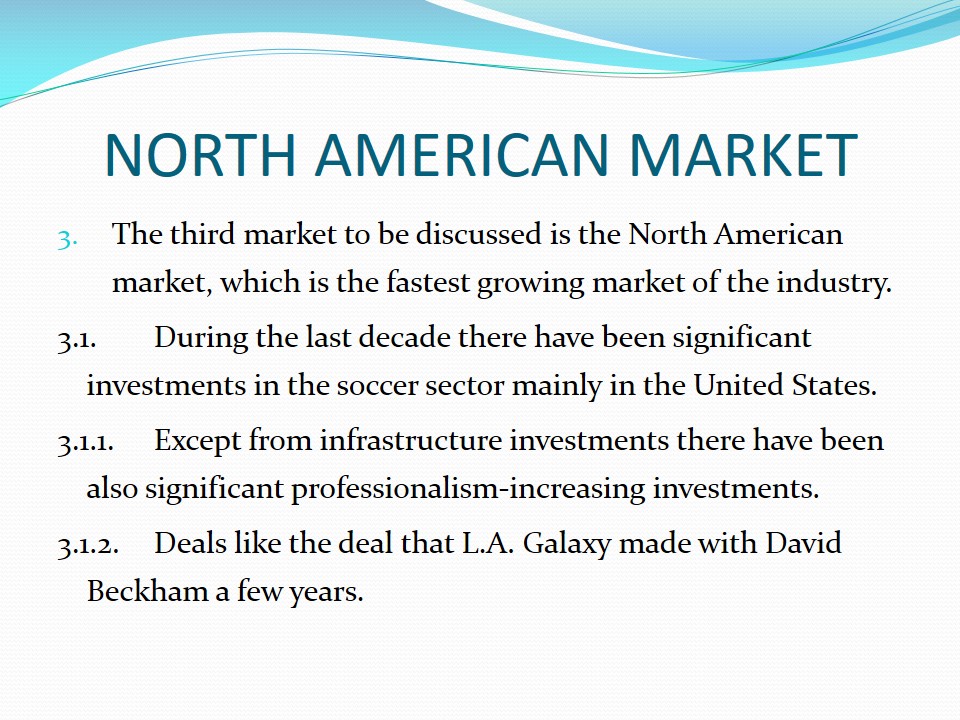
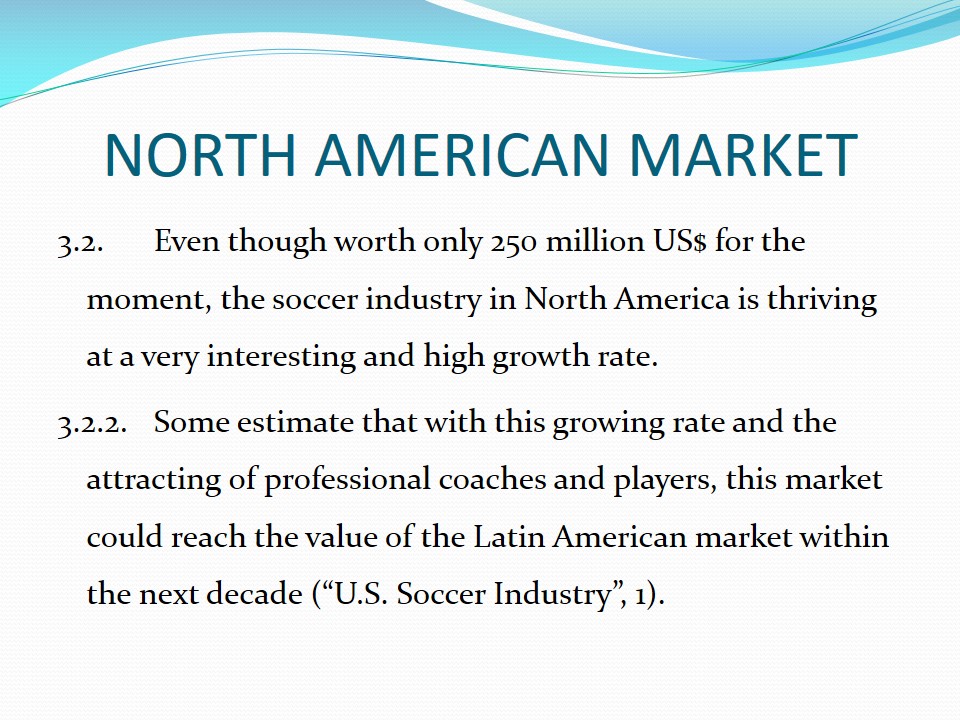
Conclusion
Thus, the purpose of this assignment was to inform the audience about the trends of the major markets within the soccer industry.
The above mentioned facts about the European, Latin American and North American markets meant to fulfill this purpose.
The comparison between the three major markets shows the clear tendency of growth for this industry.
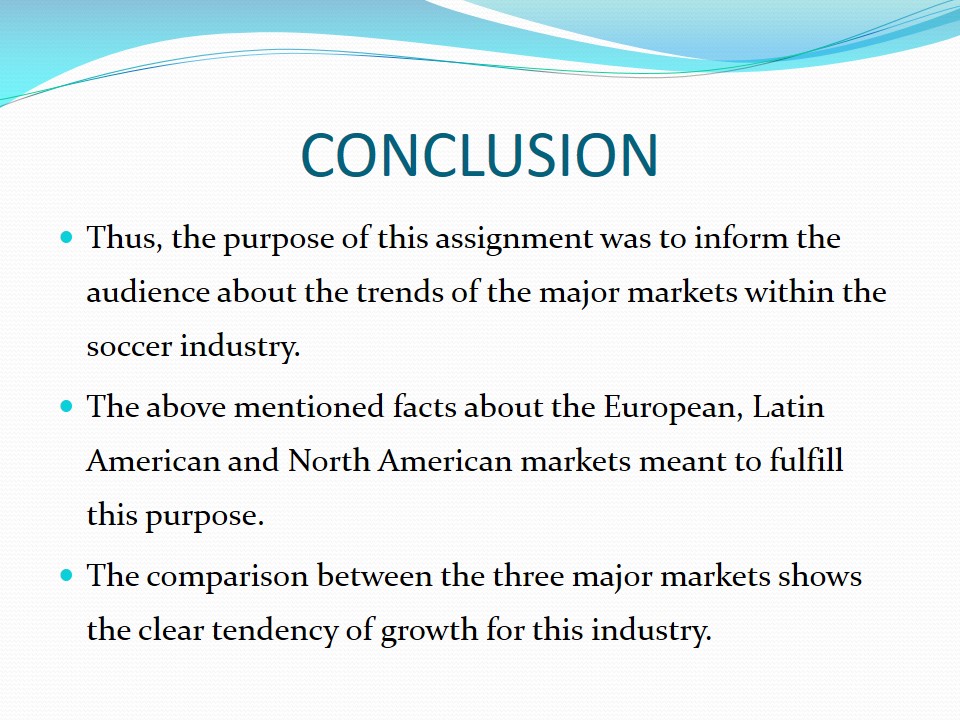
Works Cited
“European Championships”. The Football Industry Magazine. 2009. Web.
“Richest Soccer Teams”. The Forbes Magazine. 2005. Web.
“U.S. Soccer Industry”. The Sport Business Magazine. 2007. Web.